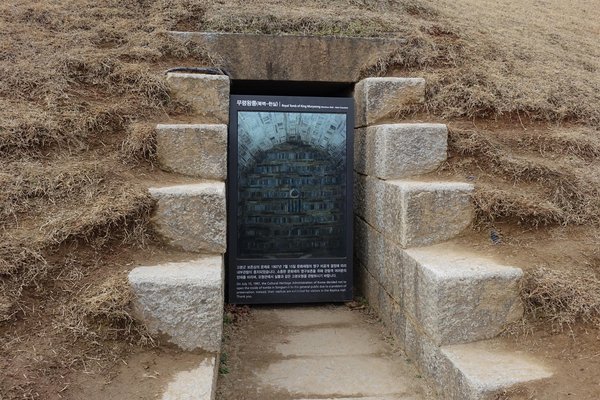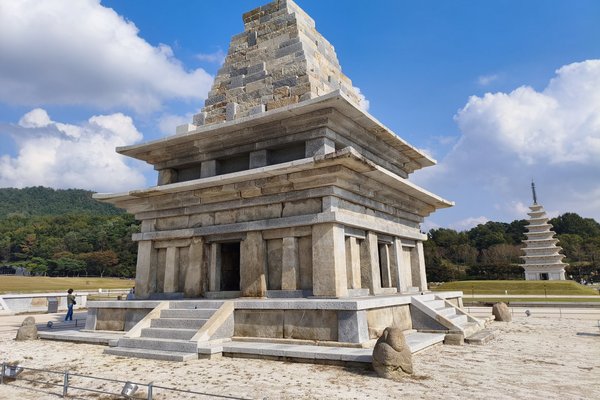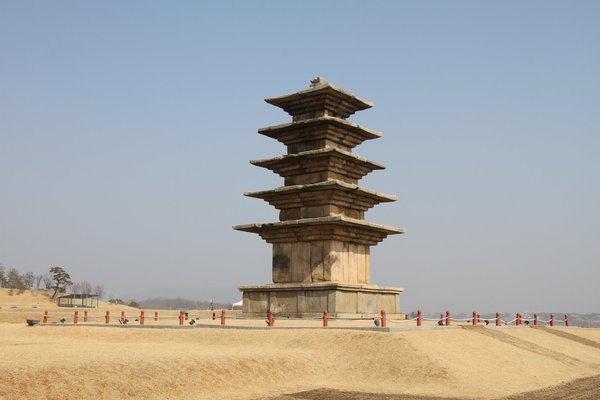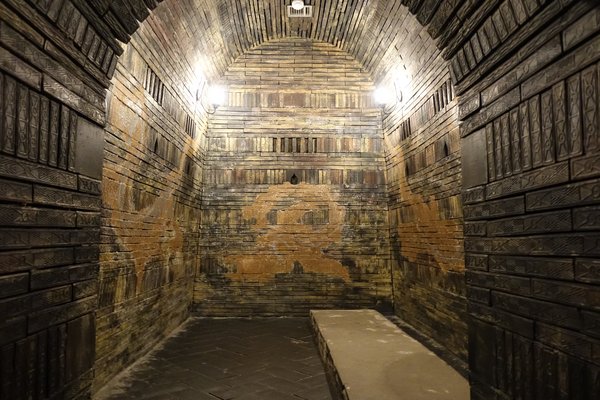Republic of Korea
Baekje Historic Areas
The Baekje Historic Areas cover the archeological sites of three capital cities from the late Baekje Kingdom that represent its unique culture.
In the 5th-7th centuries, the Baekje implemented Chinese principles of city planning, construction technology, arts and religion into the subsequent capitals of their kingdom: Gongju, Buyeo and Sabi. They further refined them and spread them to Japan and the rest of East Asia.
Community Perspective: Els and Frederik have visited the remains of Gongju, while Clyde focused on Buyeo. The Iksan cluster however is the most remarkable one according to Philipp who visited all clusters. Kyle has shared the history of the Tomb of King Muyeong and Mireuksa Temple. GabLabCebu admired the stonework of the latter.
Site Info
Official Information
- Full Name
- Baekje Historic Areas (ID: 1477)
- Country
- Republic of Korea
- Status
-
Inscribed 2015
Site history
History of Baekje Historic Areas
- 2015: Revision
- Combination of former TWHS Gongju and Buyeo Historic Sites and Iksan Historic Areas (both 2010)
- 2015: Inscribed
- Inscribed
- 2010: Revision
- As former TWHS Gongju and Buyeo: includes former TWHS Tomb of King Munyong (1994)
- Type
- Cultural
- Criteria
- ii
- iii
Links
- UNESCO
- whc.unesco.org
- Official
-
- baekje-heritage.or.kr — Baekje Historic Areas
- Related
-
- koreaherald.com — Time travel to ancient kingdom of Baekje
All Links
UNESCO.org
- whc.unesco.org — whc.unesco.org/
Official Website
- baekje-heritage.or.kr — Baekje Historic Areas
Related Resources
- koreaherald.com — Time travel to ancient kingdom of Baekje
News Article
- Oct. 22, 2025 archaeologymag.com — 1,400-year-old ice storage from Baekje Kingdom unearthed beneath Busosanseong Fortress
- July 17, 2023 koreaherald.com — 1,500-year-old fortress flooded, damaged by downpours
- July 30, 2020 koreaherald.com — UNESCO listed World Heritage Gongsanseong Fortress damaged by heavy rain
- April 30, 2019 buddhistdoor.net — Korea’s Oldest Stone Buddhist Pagoda Officially Unveiled after 20-year Restoration Project
- Jan. 16, 2016 koreaherald.com — Restoring East Asia’s oldest stone pagoda
Community Information
- Community Category
- Archaeological site: Far Eastern
Travel Information
Yeosu Hotspot
< than 150km to Iksan (direct KTX high-speed train 1.5 hours)
Seoul hotspot
Recent Connections
-
Icehouses
At Busosanseong Fortress (source)
-
Yeosu Hotspot
< than 150km to Iksan (direct KTX high-…
-
Poetic Quotations
Baekje’s Stone by Kim Je-hyun
Connections of Baekje Historic Areas
- Trivia
-
-
Replica cultural sites
“The Exhibition Hall of the Royal Tombs in Songsan-ri displays a replica – reproduced in precision – of an ancient tomb closed to the public for reasons of protection. Visitors can learn about the excavation done for the royal tombs, interior appearance of the tombs, and Baekje culture of the time.” - Nomination File -
Built or owned by Japanese
Mireuksa Temple Pagoda, in 1914 the Japanese government supported it with a concrete backing. -
On Passports
(Diadem found in the Tomb of King Muryeong and the iconic Baekje Incense Burner) pages 8-9 -
Dragon
“The mural depicting the Four Deities (supernatural creatures representing the four directions, namely, the Blue Dragon, White Tiger, Red Phoenix, and Black Tortoise) discovered at Tomb No. 1 is widely recognized as one of the most representative tomb murals of the Baekje.” - Nomination File
-
- History
-
-
Buried treasures
Baekje Treasures (Tomb of King Muryeong and Mireuksa Temple) -
Located in a Former Capital
Baekje Kingdom (Gongju, Buyeo) -
Three Kingdoms of Korea
-
Famous suicides
Nakhwaam Rock (Buseosanseong) “Nakhwaam is a rock cliff towering over Baengmagang River in the northern end of Busosan Mountain. According to the legend, this is where the royal court women of Baekje jumped off to kill themselves when the kingdom of Baekje was defeated during the invasion of Sabiseong Fortress (now Busosanseong Fortress in Buyeo) by the Shilla-Tang Alliance. The name of this rock, Nakhwaam, literally means "the cliff of falling flowers" and symbolizes the fidelity and loyalty of Baekje women.” -
Queens and Empresses
Queen Seonhwa and the origin of Mireuksa Temple, “The discovery of a record of the offerings alongside the sarira reliquaries confirmed that the Mireuksa Temple was established in the in 639 CE during the reign of King Mu by the Queen’s wish as part of her efforts to invoke Buddha’s favor.” - Nomination File
-
- Architecture
-
-
Brick architecture
“The stone chamber tombs with a corridor and the brick chamber tombs that were discovered in the Royal Tombs in Songsan-ri and the Royal Tombs in Neungsan-ri clearly illustrate that Baekje embraced – and advanced – the royal tomb-building technique of vaulted brick chamber tombs, which were popular at that time in China.” - Nomination File -
Chinese Garden
“Historical records indicate that the style of the Baekje gardens had a considerable influence on the development of Japanese gardens. However, as a garden in the royal palace from the Sabi Period was discovered at the Archaeological Site in Wanggung-ri, it was confirmed that China, the Baekje Kingdom, and Japan were closely engaged in exchanges of their garden cultures. Some of the oddly formed rocks and strangely shaped stones in the Archaeological Site in Wanggung-ri contain Chinese viewing stones, indicating the international nature of Baekje culture.” - Nomination File -
Earth Architecture
“Gongsanseong Fortress consists of both earthen wall sections and stone wall sections, although most parts are stone walls. The total length of the fortress amounts for 2,660m (stone walls: 1,925m; earthen walls: 735m).” - Nomination File
-
- Damaged
-
-
Destroyed during invasion
Mireuksa Temple, “The findings indicated that the temple was established in the early 7th century during the reign of King Mu and was demolished around the time of the Japanese invasion of Korea in 1592.” - Nomination File
-
- World Heritage Process
-
-
Derived from more than one TWHS
Combination of former TWHS Gongju and Buyeo Historic Sites and Iksan Historic Areas (both 2010) -
Perfect Inscriptions
2015 -
Extended from original TWHS
From Tomb of King Munyong
-
- Religion and Belief
-
-
Legends and Folk Myths
Nakhwaam Rock, The Cliff of Falling Flowers “Nakhwaam Cliff and spring sites in Busosanseong Fortress form the background to many legends related to the royal family of Baekje.” - Nomination File -
Buddhist Pure Land
“The presence of so many temples and pagodas in Baekje suggests a high level of political symbolism intended to show that the capital of Baekje was the ‘land of Buddha’ and that the sovereign power was so divine that religious authority transcended the actual world.” - Nomination File -
Pagoda
Mireuksa jiseoktap (National Treasure 11), built in 639 AD is the largest (and oldest) stone pagoda in Korea. “The Stone Pagoda at the Mireuksa Temple Site was the prototype of Korean stone pagodas and the first structure built with granite – which is hard to work with, but exceptionally durable – to express the architectural style of wooden pagodas built with materials that were easy to process. The construction of this stone pagoda laid the foundation for Baekje’s transformation into “the nation of stone pagodas.” - Nomination File
-
- Human Activity
-
-
Festivals
Baekje Cultural FestivalSee www.baekje.org
-
- Constructions
-
-
Cultural sites connected to Cliffs
Nakhwaam Rock, The Cliff of Falling Flowers “Nakhwaam Cliff and spring sites in Busosanseong Fortress form the background to many legends related to the royal family of Baekje.” - Nomination File -
Dynastic Burial Places
Baekje Dynasty (Tomb of King Muryeong) -
Icehouses
At Busosanseong Fortress (source)
-
Latrines
Archaeological Site in Wanggung-ri “Three units of large toilet were found lying in a row from east to west. Among them, Toilet No. 1 is 10.8m long, 1.8m wide, and 3.4m deep. These large toilets seemed to be used by ministers or court servants living in the royal palace. This was the first large ancient toilets found in Korea as an important archeological discovery. The remains have been covered with a protective layer of soil for conservation. Wooden strips for toilet discovered at the sites are housed at the Buyeo National Research Institute.” - Nomination File -
Tombs
Tomb of King Muryeong (501 to 523)
-
- Timeline
-
-
Built in the 5th century
“The Baekje Historic Areas serial property comprises eight archaeological sites dating from 475-660 CE” - AB Evaluation
-
- WHS Hotspots
-
-
Yeosu Hotspot
< than 150km to Iksan (direct KTX high-speed train 1.5 hours)
-
Seoul hotspot
< than 150km to Gongju (direct KTX high-speed train 1.5 hours)
-
- Science and Technology
-
-
Recently discovered
Tomb of King Muyeong (1971) “The tomb was accidentally discovered during water drainage work on the No.5 and 6 tombs in 1971. It had been untouched by grave robbers and thieves for over a millennium, and when it was excavated it was the first time the tomb had been opened since the bodies of the king and queen were interred there fifteen hundred years earlier.” - wiki
-
- Literature & Film
-
-
Poetic Quotations
Baekje’s Stone by Kim Je-hyun -
Famous Love Stories
“The Song of Seodong”
-
News
- archaeologymag.com 10/22/2025
- 1,400-year-old ice storage from Ba…
- koreaherald.com 07/17/2023
- 1,500-year-old fortress flooded, d…
- koreaherald.com 07/30/2020
- UNESCO listed World Heritage Gongs…
Recent Visitors
Visitors of Baekje Historic Areas
- Alexander Lehmann
- Alexander Parsons
- Alex Goh
- Atila Ege
- Bernard Joseph Esposo Guerrero
- Bigboss99
- bossc
- Bram de Bruin
- Can SARICA
- Chalamphol Therakul
- chenboada
- Christoph
- Christravelblog
- Clyde
- Colossus
- CugelVance
- Dimitar Krastev
- DouglasR
- Elaine McArdle
- Els Slots
- Errol Neo
- Eva Kisgyorgy
- Fan Yibo
- Frederik Dawson
- GabLabCebu
- Hadrianus
- Harry Mitsidis
- inomusay
- Jarek Pokrzywnicki
- Javier
- JL
- Joel on the Road
- John Smaranda
- Jonas Kremer
- Jon Eshuijs
- Joyce van Soest
- Kasper
- Kristin
- Kyle Magnuson
- Loic Pedras
- Luboang
- Lukasz Palczewski
- Luke LOU
- Maciej Gil
- Martin
- MaYumin
- Michael Ayers
- Michael Turtle
- Mihai Dascalu
- Mikko
- Miloš Tašković
- nan
- Nihal Ege
- Patrik
- Paul Schofield
- Petteri
- Philipp Peterer
- phillipmeng
- Reza
- Rob Wilson
- Roman Bruehwiler
- Sergio Arjona
- Shandos Cleaver
- Simonh
- Slavi
- Solivagant
- Stanislaw Warwas
- Thomas Buechler
- tony0001
- Vincent Cheung
- Westwards
- Xiong Wei
- Xiquinho Silva
- Zach
- Zoë Sheng
- Zos M
Community Reviews
Show full reviews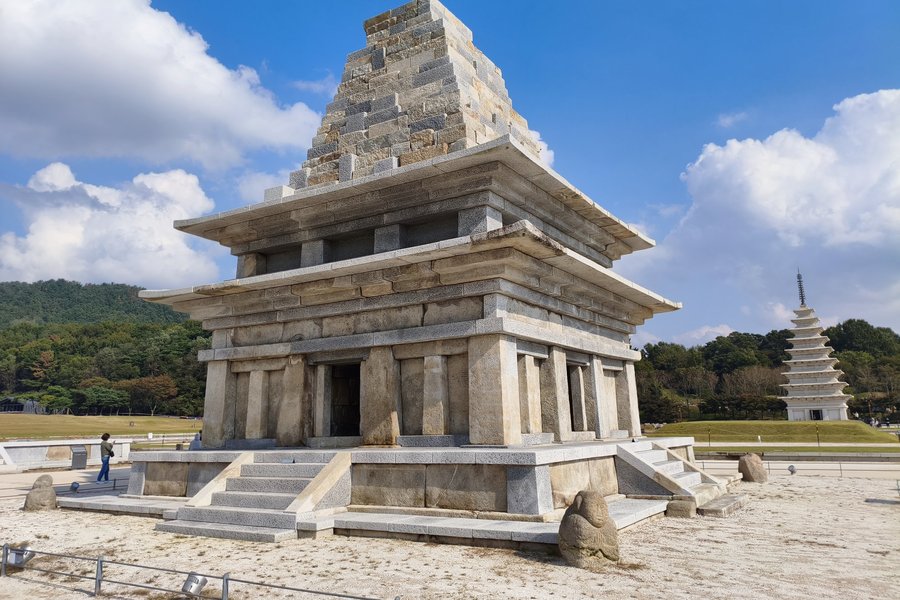
Time of the visit: the 25th of oct.,2025
The Mireuksa Temple Site and the Wanggung-ri Site in Iksan are part of the UNESCO World Heritage “Baekje Historic Areas”. Mireuksa was one of the largest Buddhist temples of the Baekje Kingdom (18 BCE–660 CE), showcasing its refined architecture and religious culture. Wanggung-ri was the royal palace area, reflecting Baekje’s political power and urban planning.
Early in the morning I took the train from Gwangju to Iksan.As I came down the escalator, I was greeted by dance and music. Right by the exit, a stage had been set up where traditional Korean songs and dances were being performed. Fascinating. Too fascinating... I missed my bus by a minute and had to wait an hour for the next one.Luckily, interesting dances were performed, so the time passed quickly. The bus took what felt like forever (about 45-50 minutes) to reach Mireuksa.
At the information center next to the bus stop, I learned that there's a shuttle bus on weekends that runs the route from Iksan train station to Mireuska and then on to Wanggangri. There are 3-4 stops along the way, such as as a film set prison and the UNESCO World Centre (which you can visit, but it's not a must).I also got some leaflets.
I first visited the museum,then I discovered every inch of the open-air area.The restored Mireuksa pagoda is one of the oldest ones in South Korea.
The other pagoda is a completely new construction. The outlines of the …
Keep reading 0 comments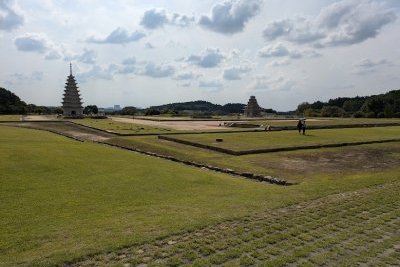
Being only able to visit one cluster of sites, we focused on Iksan and Wanggung-ri, following Philipp's recommendation. Both mark the final bout of the Baekje Kingdom around 600-700 CE, before it was swallowed up by the neighboring Silla Kingdom. Baekje had been on a downward spiral for a while. Their last semi-great, i.e., ambitiuous, king, Mu, tried to revitalize the kingdom by planning a new capital around Mireuksa and strengthening the state. However, he ultimately failed, and his successor was the last king of an independent Baekje.
The other two locations mark earlier periods of Baekje (Gongju 475–538, Buyeo 538-660). In the southward shift of the capitals, you can see the continuous growing pressure from the north and the competing kingdoms.
What you see today in Mireuksa was discovered only in 1980. The tangible structures were reconstructed, with the second restoration ending in 2018. What I found well done were the markings of the city layout (see picture). You could imagine the city and walking its streets, all the while not imagining too much.
Wanggung-ri is the lesser of the two sites. You get the hills and can envision the fortifications, but Mireuksa leaves the better overall impression. Mireuksa also features the better museum with stellar artifacts (do not miss).
Personally, I was left a bit wanting. These structures are parallel in time to the Roman Empire. The site pales in comparison to the remains of earlier sites from Antiquity (any site in Greece) and …
Keep reading 0 comments
On a sunny June day in 2023, I arrived at Iksan station (conveniently right next to the intercity bus station) to see the Mireuksa Temple Site. All you have to do from here is go straight (crossing one road) and look for the nearest bus stop on the right side (bus direction: away from the station), and you can take city bus #41 from there to the site in just under an hour. As one may already expect from previous reviews, there is not so much to the site, but really, one may take up to an hour taking things slow and thoroughly appreciating all the little details (there are several markers to read too) as the distances in the vast open space with beautiful natural surroundings can be deceptively long; even more time would be needed to check out the museum. Be warned, the bus may pass by early, so indeed, it may be unwise to commute all the way here if you are in a rush. Still, I found Iksan to be extra convenient for my itinerary since I planned to be in Jeonju by afternoon, and Mireuksa seemed to be one of the most definitive components of this serial site.
Arriving at the site, you will first encounter two scenic little ponds, one on each side of the path. Ascending towards the temple grounds, you will next find two original stone flagpoles. Finally, on the highest level, with the beautiful Yonghwasan (Dragon Flower Mountain) in the …
Keep reading 0 comments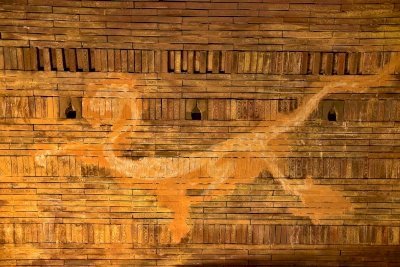
After four days of great joy in southwestern South Korea seeing many interesting sites, my friends and I drove back from Jeonju to Seoul in early morning with a plan to have a brief stop in Nonsan to see UNESCO listed Seowon and Gongju for Baekje sites. With some problem with GPS that took us to the only prepaid card highway exit which we did not have, with help from locals, we finally got back to the highway but decided to go to Gongju directly after noted from GPS that 1-hour detour to other exit if we still want to visit Nonsan, a terrible situation for WHS enthusiast.
When we reached Gongju, the traffic was really bad, since there was a festival in the city center next to the Gongsanseong Fortress, we struck in the traffic in front of the fortress for almost one hour, a really boring way to admire World Heritage Site! Since there was no hope to find available parking slot and we really wanted to go away from city center, so we decided to pass Gongsanseong Fortress and went to the famous King Muryeong Tomb instead. With a great surprised there were only few tourists here. We walked to the tomb to happily discovered that the entrance fee was waived due to the festival. At first we went to see the original tombs and other lesser tombs nearby, the tombs were a bit similar to the Silla in Gyeongju, but since the tombs were …
Keep reading 0 comments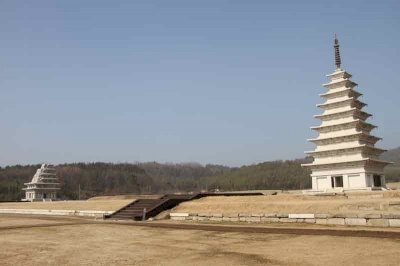
Visit February 2020 - I managed to visit all components of the Baekje Historic Areas on my Korea trip.
Gongju clusterI started in Gongju, visiting the Gongsanseong fortress upon arrival in the afternoon. It is not a spectacular, but still a nice fortress, with reconstructed gates and earthen walls. You need at least an hour to visit. It’s quite big. After spending the night in this underwhelming town, I visited the royal tombs in the morning. In hind side I should have pushed my schedule the day before for 15 minutes as this was roughly the time I needed for the visit. The tombs are not accessible all you can do is visit the museum with the replicas. Nice, but not the real deal.
Buyeo clusterI started with Busosanseong fortress and the attached archeological site. Both very underwhelming. Only fractions of the buildings are left and the fortress is rather a forested hill that serves as a town park. It is really hard to spot the elements that once created the fortress.
Jeongnimsa temple is also not a great site. The temple is basically gone and all that is left is a pagoda and the layout of where the buildings used to stand. I first intended to walk from the parking lot close to the fortress, but due to the entrance being located on the other side of a huge compound, went back to take my car.
The royal tombs and the city wall …
Keep reading 0 comments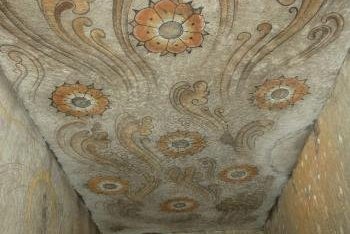
I visited this WHS in April 2017. Out of the 8 locations spread out in Iksan, Gongju and Buyeo, I chose to visit the 4 different locations in Buyeo, namely the Royal Tombs of Neungsan-ri, the Naseong City Wall, the Archaeological Site of Gwanbuk-ri and Busosanseong Fortress as well as the Jeongnimsa Temple Site.
From what I had read about the Baekje inscription what struck me to be of OUV were the different stone pagodas and peculiar Buddha Statues. Gongju lacks these elements and at the moment the most interesting stone pagoda in Iksan is being restored so I opted for Buyeo, which also has an interesting fortress, an overgrown city wall and older Baekje painted royal tombs (photo).
To get to Buyeo I took the subway to Seoul's Nambu Bus Terminal and bought an intercity bus ticket to Buyeo Bus Terminal. This same bus went to Gongju which is only a few kilometres away but I had quite a lot of ground to cover in Buyeo so I never made it to Gongju. The public transport system in South Korea is really convenient and efficient and although I'm certainly not a fan of public transport usually, I was really impressed by the service given overall.
Once I arrived at the Buyeo Bus Terminal, I decided to catch a taxi (around 4 euros) instead of waiting for another bus (number 701 or 709 to Wangneung Parking Lot Bus Stop) to get to the Royal Tombs of Neunsan-ri and the Naseong …
Keep reading 0 comments
The Baekje Historic Areas cover 8 archaeological sites in 3 clusters, representing the 3 former capital cities of this historic kingdom. During my stay in Seoul, I took a day trip to the Gongju cluster by public transport. It was my first experience with Korea's long-distance bus system since my earlier visit in 2001, and it was a real pleasure to be transported on time for only 7.20 EUR on a luxury coach with wide and comfy seats. It took 1.5 hours from the Seoul Express Bus Station to the Gongju Bus Station.
Gongju nowadays has an odd city plan, with the river splitting it in two. A quick look at this provincial city proves that not everywhere in South Korea is as modern and prosperous as Seoul. The two components of the WHS are clearly visible from afar, each covering a hilltop near the river bridge closest to the city center. I first walked to Gongsanseong fortress. As I had spent the day before at Namhansanseong, I couldn’t bring up much enthusiasm for yet another Korean fortress. The flags are yellow here (“the national colour of Baekje, representing the center of the universe”), the walls are steep and the main area is without many sites of interest. Very little remains of the Baekje area: the absolute low point is the “Site of Baekje Building”, which is just a flat piece of grassland.
After half an hour or so, I decided to move on to the second component of the …
Keep reading 0 comments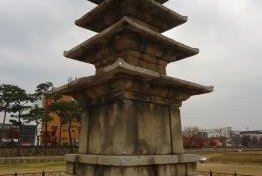
November 2016. The whole site is divided into 3 different clusters. Due to reconstruction process at Mireuksa Temple I decided to focus on Gongju and Buyeo areas.
Gongju - two different sites: Gongsanseong Fortress and Royal Tombs in Songsan-ri. At first do not buy combine ticket to the sites - separate are a little bit cheaper (local Gongju Archeological Museum mentioned on a combined ticket may be visited free of charge).
Gongsanseong Fortress - well preserved fortress walls but there is not much inside (only a few reconstructed temples or pavilions). Some reconstruction works are still in progress (including huge area around Lotus Pond). Not to be missed - nice views of a city from different spots while strolling on the walls.
Royal Tombs in Songsan-ri - walking distance from Gongsanseong Fortress. There is a small museum with copies of some royal tombs including the most famous tomb of king Muryeong and vast area of real tombs (locked, impossible to visit). Some excavations are also available on a way to Archeological Museum (around one km from the last tomb, the path is well signed)
Buyeo - Busosanseong Fortress - much bigger than the fortress in Gongju but also less preserved (at least the walls), also contains some (mostly) reconstructed buildings (temples). Do not miss Nakhwaam Rock (the cliff of falling flowers) where royal ladies of Baekje Kingdom jumped off to kill themself during the invasion of Shilla army. Allow at least 2 hours as the area is quite huge. In …
Keep reading 0 comments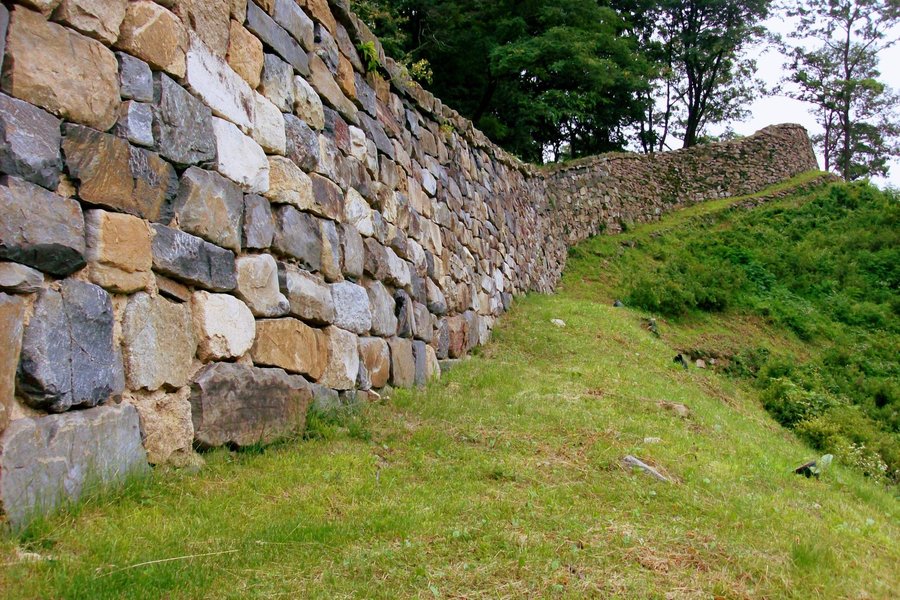
To be honest, this world heritage site has one of the lowest overall scores within our community and I think I know why. I believe this is because instead of Baekje's rich history being centralized in one place (like Gyeongju), you have Baekje's three former capitals. Thus the value is somewhat diluted from a visitor experience. Furthermore, if any of the Baekje sites in Seoul are inscribed as an extension, what then? Lastly, its perplexing that Korea did not include other Baekje treasures in the region, instead only focusing on the fomer capitals. I can assure you Baekje has other treasures that rival Silla that were not included in this WHS.
Gongju & Buyeo
One of the most important sites in this serial property is the Tomb of King Muryeong. The famous tomb, which was discovered intact, became one of Korea's most famous archeological discoveries. The tomb included items from Southeast Asia, China, and Japan. The interior of the tomb can only be visited by an onsite replica. Like Kaesong and Gyeongju, this WHS is made up of mostly tombs, fortresses, and temples. The fortress in Gongju and Buyeo are both pleasant walks, but have been partially rebuilt in later historical periods. Of all the Baekje components I explored, only Naesong City Wall remains unvisited, which I hope to correct in the future.
Iksan
While Gongju and Buyeo are easy to visit, it gets more complicated in Iksan. First and foremost if you visit Iksan hopefully it's by car, …
Keep reading 0 comments
